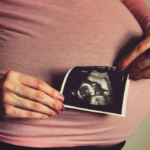Modafinil (brand name Provigil) is a wake-promoting agent which is used to treat sleepiness due to narcolepsy, shift work sleep disorder, or obstructive sleep apnea. It is also used in other settings, often in combination with other medications, to treat ADHD symptoms, depressive symptoms, and cognitive dysfunction.
In 2018, an interim report from a registry established by the manufacturer of modafinil released data indicating a prevalence of 15% for major malformation in infants exposed to modafinil during pregnancy. In contrast to adverse events reporting carried out by drug manufacturers which can overestimate the prevalence of malformations, these data were collected as part of a pregnancy registry which recruited pregnant patients prior to the detection of a congenital malformation. After these findings were released, regulatory bodies in several countries issued warnings regarding the use of modafinil in women of reproductive age.
Earlier this year, a Danish study reported a major malformation rate of 12% (n = 6) in 50 modafinil-exposed pregnancies, compared to 4.5% of methylphenidate-exposed pregnancies and 3.9% of unexposed pregnancies. After adjusting for potential confounders, modafinil was associated with a significantly increased risk for malformation compared to methylphenidate or no exposure.
In the most recent study, researchers used Swedish and Norwegian birth registers to identify women using modafinil in pregnancy. All singleton pregnancies resulting in live births were identified in the nationwide medical birth registers from Norway (2005- 2017) and Sweden (2006-2016).
In this cohort of nearly 2 million pregnancies, researchers used national prescribed drug registries to identify 133 pregnancies exposed to modafinil during early pregnancy. Compared to pregnant women who had not received modafinil, pregnant women using modafinil were more likely to be overweight or obese, had higher rates of smoking, and were more likely to be diagnosed with narcolepsy, multiple sclerosis, or ADHD.
Overall, the rate of major malformations in the unexposed group was 2.1%. In the modafinil group, there were three infants diagnosed with a major malformation, resulting in a prevalence rate of 2.6% and a crude risk ratio of 1.06 (95% CI, 0.35-3.26).
While the most recent data from Sweden and Norway are reassuring regarding the use of modafinil during pregnancy, one cannot ignore the data from the previous two reports which demonstrated very high rates of malformations among the children born to women taking modafinil. While we do not know how many pregnancies were included in the original registry report, combining the two other studies gives us 195 exposed pregnancies. If we do a crude estimate of risk based on these two studies, the risk of major malformation would be around 5% (9 out of 182 exposures).
Based on these findings, we would be reluctant to support the use of modafinil during pregnancy. Ideally we would like to have data from 600-700 exposures to get a better estimate of risk; basing decisions regarding safety on small sample sizes can lead to miscalculations of risk in either direction.
Health Canada has issued the following recommendations regarding the use of modafinil.
- Women who are pregnant, or plan to become pregnant, should not use modafinil.
- Because hormonal birth control methods, such as birth control pills, may not work as well when used at the same time as modafinil, women using these types of birth control may have a higher chance of getting pregnant while taking modafinil. Alternative modes of birth control should be considered.
- Women should take a pregnancy test within a week before starting treatment with modafinil to ensure they are not pregnant.
Hopefully over the next year, we will have more data from the registry or other resources to help guide our decision making.
Ruta Nonacs, MD PhD
Cesta CE, Engeland A, Karlsson P, Kieler H, Reutfors J, Furu K. Incidence of Malformations After Early Pregnancy Exposure to Modafinil in Sweden and Norway. JAMA. 2020 Sep 1;324(9):895-897.
Damkier P, Broe A. First-Trimester Pregnancy Exposure to Modafinil and Risk of Congenital Malformations. JAMA Psychiatry, January 2020.







Leave A Comment